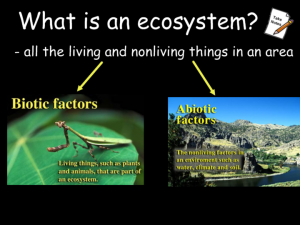 In IPM, cultural and physical practices are those activities involved in caring for plants, such as site and cultivar selection, creating habitats for beneficial insects, weeding, watering, nutrient management, etc.
In IPM, cultural and physical practices are those activities involved in caring for plants, such as site and cultivar selection, creating habitats for beneficial insects, weeding, watering, nutrient management, etc.
Planting Site
Selection of a good planting site and proper planting methods are essential to the long-term health of plants. In addition, proper fertilization and watering practices reduce plant stress. Some general rules of thumb include: 1) water-stressed plants become more susceptible to spider mites; 2) over-fertilization renders plants more attractive to aphids. Too much and too little water and fertilizer can cause plant stress.
Plant Selection
Use landscape plant species that are not hosts to pests and, if available, pest-resistant plant varieties. Many native plants are adapted to the local environment and can offer the best protection. However, some of these plants can also be expected to serve as a host to insect and mite pests. Thus, plant selection can be used to create both an insect “pest-free landscape” or be used to plant an “insect-intensive landscape” (the expanded version of a butterfly garden)!
- Ornamental plants that are susceptible to arthropod pests
- Select Plants by Adaptability Region
- The Importance of Using Native Plants in the Landscape
Watering
Watering practices can be a major contributor to changing habitats. For instance, in dryer habitats, irrigation can favor new vegetation patterns while discouraging or eliminating host-plant species previously common to the area.
Properly Identify Insect Pests
Proper identification of insect pests is a key concept in IPM. Management programs are most effective when targeted to the life cycle and behavior of the pest. Contact your local Texas AgriLife Extension Service office for help in accurately identifying insects pests. Extension entomology programs provide identifications, fact sheets and publications. An identification form is available to submit insect and mite samples. Also see: A Field Guide to Common Texas Insects (Texas Monthly Fieldguide Series) by Bastiaan M. Drees and John A. Jackman (1998).
Recognize and Diagnose Plant Damage
Insect pests damage plants by feeding on them. Feeding symptoms are often easier to detect than the pests themselves. Caterpillars, grasshoppers and beetles all have chewing mouthparts. They can chew holes in leaves, strip them bare (skeletonize) or defoliate entire plants. They may also tunnel into petioles (leaf stalks) and stems and consume entire plants.Recently damaged plant parts will have freshly damaged edges. Older damage turns the edges brown. Other evidence of damage by chewing insects includes silk or fecal material in the vicinity of the damage. See more about recognizing insect damage.
Environmental Elements
Arthropods exist in specific sets of environmental conditions, which include elements such as shelter areas and food resources such as host plants. Understanding habitat requirements of specific arthropods can help in the design of landscapes that either encourage or discourage their populations.
During the process or urbanization, natural habitats are modified and evolve over time to favor various species or different groups of arthropods. Populations of species in the wild or natural habitat may persist or migrate from neighboring non-urbanized habitats. For instance, if a landscape is established in an area such as pasture, some insects may be locally abundant. Similarly, in areas with a prevalence or cracks and crevices created by rocks, fallen trees and other debris, scorpions may be a common occurrence. As new elements are added or removed from the environment, conditions change to favor different species or groups of species. Careful selection of elements removed or added to the environment will dictate which species will be encourage or discouraged.
Abiotic Elements
Abiotic elements are the non-living factors in an environment (light, temperature, wind, precipitation, gasses). Many nuisance pests are present due to physical characteristics of the local environment. Piles or rocks, deposits of leaf litter, and presence of ground debris are favorable habitats of creatures like snails and slugs, sowbugs and pillbugs, centipedes and millipedes, and scorpions. When these elements persist undisturbed, populations of these organisms may persist. Shade, moisture and structure (cracks and crevices) profoundly affect arthropod populations favored in those habitats. Watering practices can be a major contributor to changing habitats. For instance, in drier habitats irrigation can  favor new vegetation patterns while discouraging or eliminating host-plant species previously common to the area.
favor new vegetation patterns while discouraging or eliminating host-plant species previously common to the area.
Light, Heat and Humidity
Physical methods of insect control include light, heat and humidity. Manipulating these is often difficult in the landscape. Too much light can lead to sun scalding whereas too little light can cause poor vigor. Both situations can reduce plant health and lead to pest problems. Humidity becomes a more important factor in interiorscapes, where air conditioning systems cause low humidity conditions. This situation can be detrimental to the survival of natural enemies that control indoor pests.
Biotic Elements
Biotic elements are the living factors in an environment (food such as host plants, other living organisms, competition, relationships, predation, etc.). Arthropods that depend on food from plant materials can thrive in habitats where suitable host plants are prevalent. Preserving or removing these plants can have a dramatic effect on populations of these species, and planting or introduction of new host plants will cause shifts in the arthropod species present and their abundance.
Next >> Biological Practices

